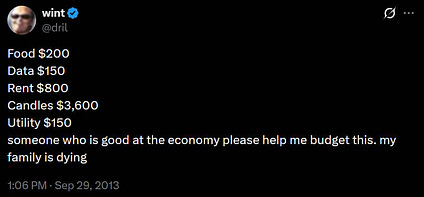Poverty fell to 31.6% in the first half of 2025, reports INDEC – Buenos Aires Times

Executive Summary: Argentina’s Progress on Sustainable Development Goal 1 (No Poverty)
A recent report from the INDEC national statistics bureau indicates a significant reduction in Argentina’s poverty rate, which fell to 31.6 percent in the first half of the year. This represents a 6.5 percentage point decrease from the second half of 2024. While this marks progress towards Sustainable Development Goal 1 (No Poverty), the data reveals that over 14 million people remain below the poverty line. Furthermore, persistent challenges related to SDG 10 (Reduced Inequalities) are evident in significant income, age, and regional disparities.
Analysis of Poverty Reduction and SDG 1 Targets
Key Poverty Indicators
The decline in poverty reflects a positive trend in the nation’s effort to meet SDG 1, which aims to end poverty in all its forms everywhere. The primary findings include:
- Overall Poverty Rate: 31.6% of the population, a decrease of 6.5 points.
- Households in Poverty: 24.1% of households, a decrease of 4.5 points.
Progress on Eradicating Extreme Poverty (SDG Target 1.1)
The data also shows a downward trend in destitution, directly addressing SDG Target 1.1, which calls for the eradication of extreme poverty.
- Households in Extreme Poverty: 5.6%, a decrease of 0.8 points.
- Population in Extreme Poverty: 6.9%, a decrease of 1.3 points.
Historical Context and Trajectory
The current figures represent a notable recovery from a recent peak in poverty, illustrating a volatile economic environment.
- December 2023: The poverty rate stood at 41.7% upon the new administration taking office.
- First Half 2024: Following a currency devaluation, the rate peaked at 52.9%, with extreme poverty at 18.1%.
- Second Half 2024: Extreme poverty fell to 8.2%.
- First Half of Current Year: The poverty rate has now declined to 31.6%, and extreme poverty to 6.9%.
Economic Factors and Linkages to SDG 8 (Decent Work and Economic Growth)
Impact of Inflation Control
The primary driver behind the poverty reduction is identified as a sharp fall in inflation, a key component for stable economic growth as outlined in SDG 8. The government’s austerity measures have been credited with slowing price increases, thereby improving the real income of households.
Household Income vs. Basic Needs Costs
The improvement in purchasing power is central to achieving SDG 1 and SDG 2 (Zero Hunger). A comparison of income growth against the cost of basic necessities demonstrates this trend:
- Average Household Income Growth: 26.3%
- Overall Basic Basket (CBT) Cost Increase: 12.3%
- Basic Food Basket (CBA) Cost Increase: 13.2%
This discrepancy has allowed more households to afford basic food and services, directly contributing to poverty reduction.
Persistent Challenges and SDG 10 (Reduced Inequalities)
Despite the overall positive trend, the report highlights significant inequalities that challenge the ambitions of SDG 10.
The Income Gap
A substantial gap persists between the income of poor households and the cost of the basic basket. On average, these households earned 671,492 pesos while the cost of the CBT for the same group was 1,065,691 pesos, indicating that their income is insufficient to cover basic needs.
Demographic Disparities
Poverty disproportionately affects the younger population, a critical concern for long-term development.
- Under 14 years: 45.4%
- 15 to 29 years: 37.0%
- 30 to 64 years: 27.7%
- 65 years and over: 10.8%
Regional Inequalities
Poverty levels vary significantly across the country, underscoring the need for targeted regional development policies.
- Highest Rates: NEA (39.0%) and Cuyo (33.8%)
- Lowest Rates: Patagonia (27.0%) and Pampas (30.5%)
Government Response and Policy Implications
Officials from the administration of President Javier Milei have welcomed the data, attributing the decline in poverty to the government’s austerity measures and fiscal discipline. The Presidential Spokesperson and the Human Capital Ministry framed the results as evidence that their economic model, contrasted with previous “populist” policies, is effective in reducing poverty.
Analysis of Sustainable Development Goals in the Article
1. Which SDGs are addressed or connected to the issues highlighted in the article?
-
SDG 1: No Poverty
This is the most prominent SDG addressed in the article. The entire text revolves around the measurement and analysis of poverty and extreme poverty rates in Argentina. It explicitly discusses the percentage of the population and households living below the poverty line, trends in these figures, and the government’s response to these changes. For example, the article opens by stating, “Argentina’s poverty rate fell to 31.6 percent in the first of the year,” directly engaging with the core theme of SDG 1.
-
SDG 10: Reduced Inequalities
The article connects to this SDG by disaggregating poverty data and highlighting disparities among different groups within the population. It provides a detailed breakdown of poverty rates by age and geographical region, revealing significant inequalities. The text notes the “worrying penetration of poverty among children and adolescents: 45.4 percent of those under the age of 14 live in households below the poverty line,” which is substantially higher than the rate for adults (27.7%) and seniors (10.8%). It also points out regional disparities, with the NEA region having a poverty rate of 39 percent compared to 27 percent in Patagonia.
2. What specific targets under those SDGs can be identified based on the article’s content?
-
SDG 1: No Poverty
-
Target 1.1: By 2030, eradicate extreme poverty for all people everywhere.
- The article directly addresses this target by reporting on the level and trend of extreme poverty in Argentina. It states that “5.6 percent of households were classified as living in extreme poverty, encompassing 6.9 percent of the population,” and notes the recent declines in these figures.
-
Target 1.2: By 2030, reduce at least by half the proportion of men, women and children of all ages living in poverty in all its dimensions according to national definitions.
- The article focuses on poverty as defined by national standards, mentioning that the INDEC bureau “measures poverty and extreme poverty by a household’s ability to afford the basic food basket (CBA) and the overall basic basket (CBT).” It reports on the overall poverty rate (31.6%) and specifically breaks down the data by age, showing that “45.4 percent of those under the age of 14 live in households below the poverty line,” which is directly relevant to reducing poverty for children as specified in the target.
-
Target 1.1: By 2030, eradicate extreme poverty for all people everywhere.
-
SDG 10: Reduced Inequalities
-
Target 10.2: By 2030, empower and promote the social, economic and political inclusion of all, irrespective of age, sex, disability, race, ethnicity, origin, religion or economic or other status.
- The article’s analysis of poverty data by age group directly relates to this target. By highlighting that children and young people (45.4% and 37% respectively) face much higher poverty rates than older adults (10.8%), the article underscores a significant economic inequality based on age, which is a key dimension of social and economic inclusion addressed by Target 10.2.
-
Target 10.2: By 2030, empower and promote the social, economic and political inclusion of all, irrespective of age, sex, disability, race, ethnicity, origin, religion or economic or other status.
3. Are there any indicators mentioned or implied in the article that can be used to measure progress towards the identified targets?
-
For SDG 1 Targets:
-
Indicator 1.1.1: Proportion of the population living below the international poverty line.
- While the article does not use the international poverty line, it provides the national equivalent by stating the “proportion of households… classified as living in extreme poverty” (5.6%) and the percentage of the population in extreme poverty (6.9%). This serves as a direct measure of progress toward eradicating extreme poverty within the national context.
-
Indicator 1.2.1: Proportion of population living below the national poverty line, by sex and age.
- The article explicitly provides data for this indicator. It states the overall national poverty rate (“31.6 percent”) and offers a detailed breakdown by age: “45.4 percent of those under the age of 14,” “37 percent” for those aged 15 to 29, “27.7 percent” for those aged 30 to 64, and “10.8 percent” for those 65 and over. This data directly measures the proportion of the population living below the national poverty line, disaggregated by age.
-
Indicator 1.2.2: Proportion of men, women and children of all ages living in poverty in all its dimensions according to national definitions.
- The article’s use of the “overall basic basket (CBT)” as a measure implies a multidimensional aspect to the national poverty definition, as it goes beyond just food (CBA). The report that “more than 14 million Argentines – almost a third of the population – are now considered poor” is a direct measurement for this indicator.
-
Indicator 1.1.1: Proportion of the population living below the international poverty line.
-
For SDG 10 Target:
-
Indicator 10.2.1: Proportion of people living below 50 per cent of median income, by age.
- Although the article does not use the “50 per cent of median income” metric, it provides the necessary data to analyze economic inequality by age using the national poverty line. The stark contrast in poverty rates between children (45.4%) and seniors (10.8%) is a powerful, albeit different, indicator of the economic disparity between age groups, which is the essence of what Indicator 10.2.1 aims to measure.
-
Indicator 10.2.1: Proportion of people living below 50 per cent of median income, by age.
SDGs, Targets, and Indicators Summary
| SDGs | Targets | Indicators Identified in the Article |
|---|---|---|
| SDG 1: No Poverty |
1.1: Eradicate extreme poverty for all people.
1.2: Reduce at least by half the proportion of men, women and children of all ages living in poverty according to national definitions. |
|
| SDG 10: Reduced Inequalities | 10.2: Empower and promote the social, economic and political inclusion of all, irrespective of age. |
|
Source: batimes.com.ar

What is Your Reaction?
 Like
0
Like
0
 Dislike
0
Dislike
0
 Love
0
Love
0
 Funny
0
Funny
0
 Angry
0
Angry
0
 Sad
0
Sad
0
 Wow
0
Wow
0















































/environment-climate-change-and-health-(ech)/water-sanitation-hygiene-and-health-(wsh)/landfill-tuvalu-36092.tmb-1200v.jpg?sfvrsn=5c21fe40_1#)


.jpg.webp?itok=0ZsAnae9#)


























